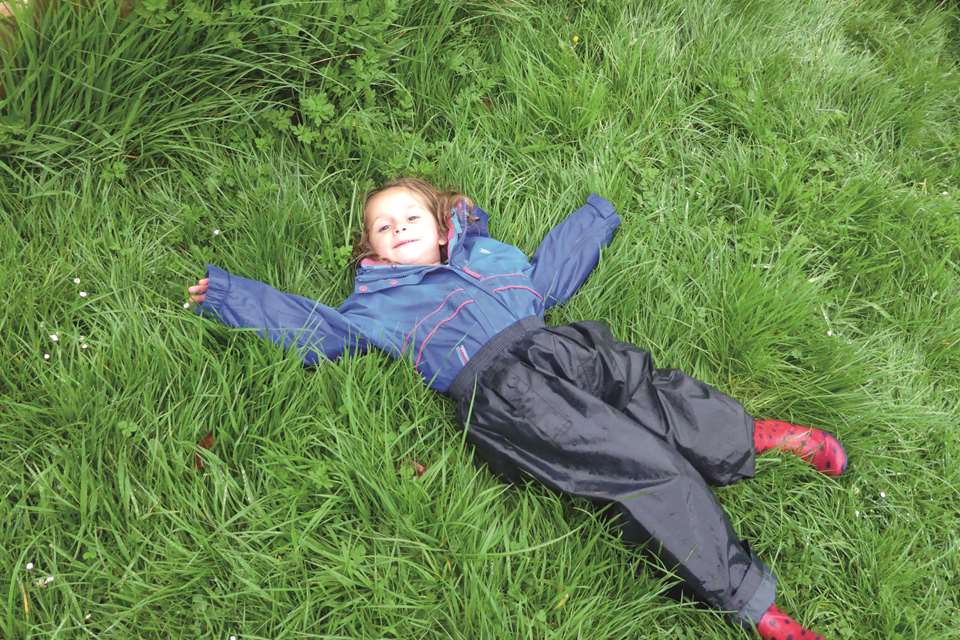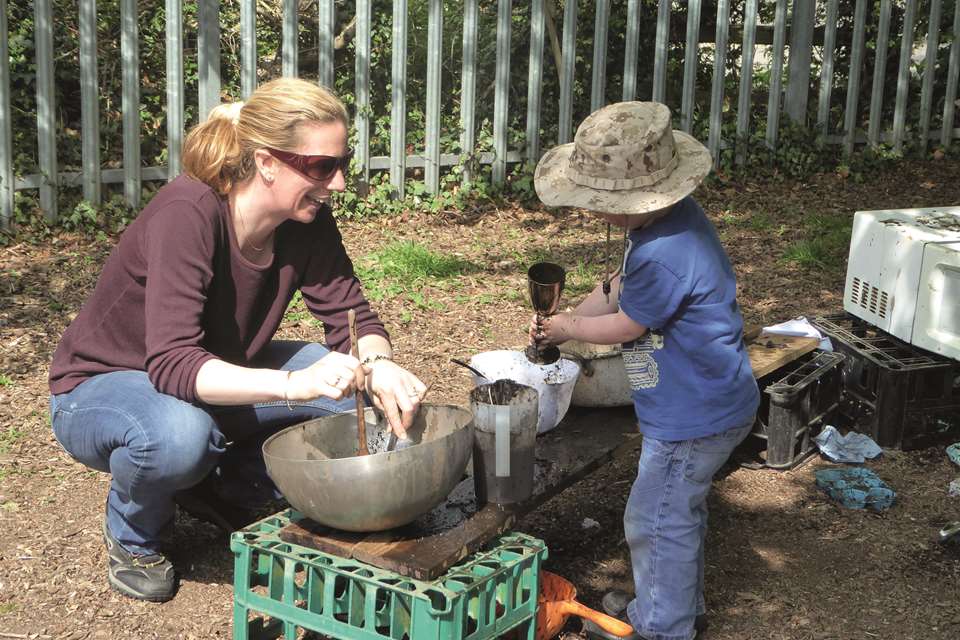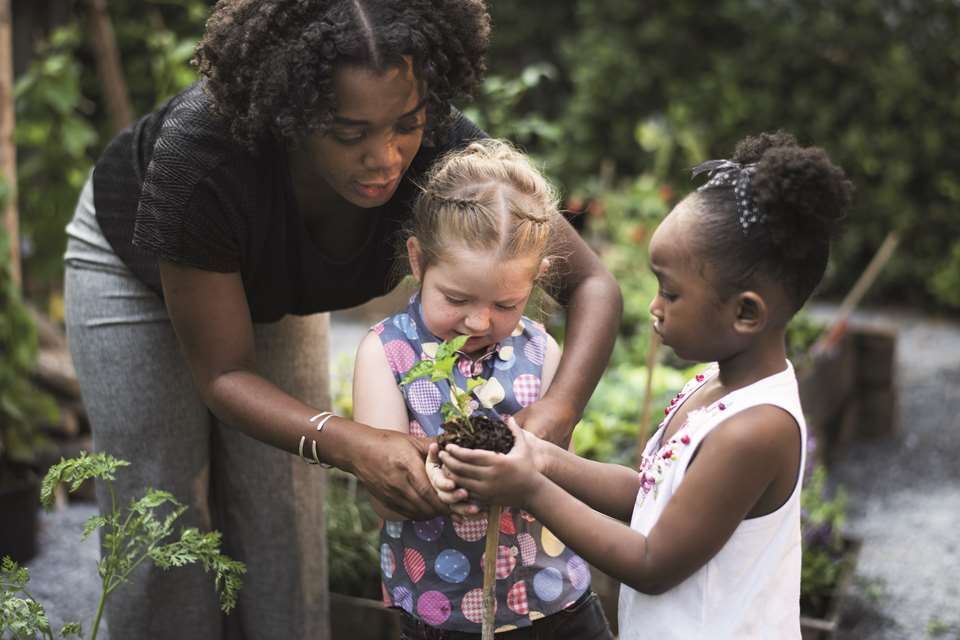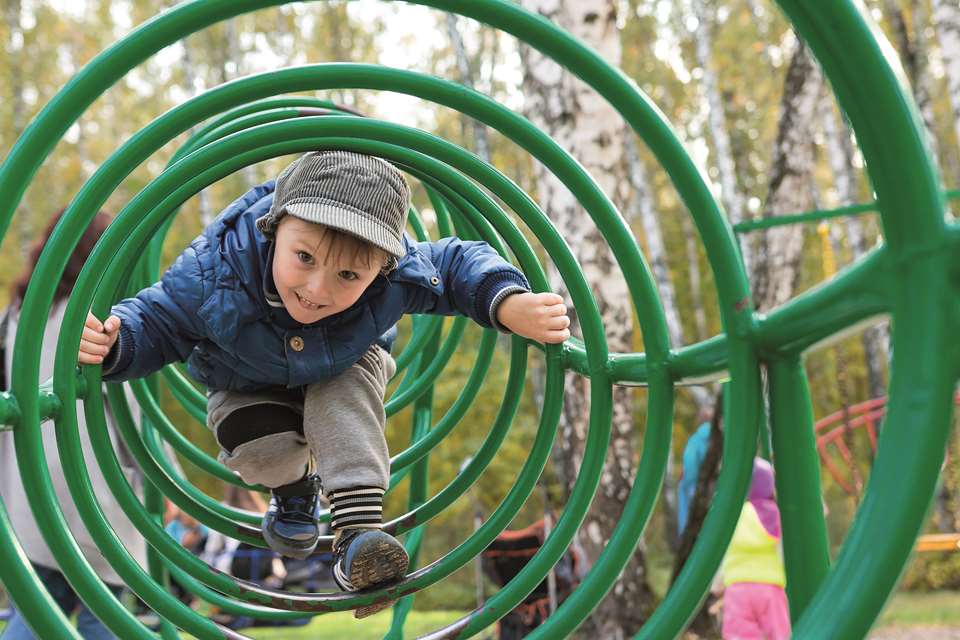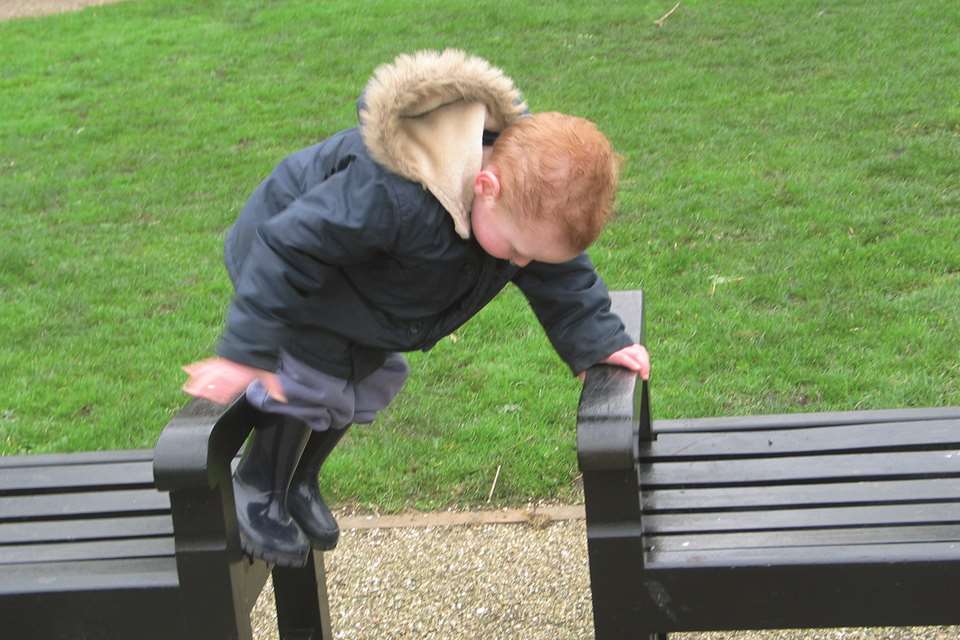Outdoors: Key 4 - In and out
Professor Jan White
Tuesday, March 29, 2022
Professor Jan White considers how to get children and staff outdoors and back inside again with ease
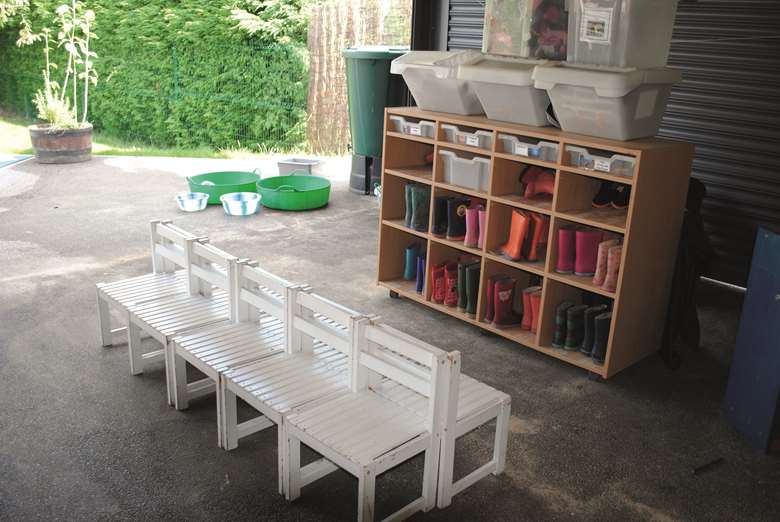
A number of core organisational issues make all the difference to how well outdoor provision works for everyone on a daily basis throughout the year. Paying attention to these ‘12 Keys to Unlocking Learning Outdoors’ and working on them as a team over time gradually unlocks the wonderful potential of the outdoors as an enjoyable, effective and empowering environment for learning in the early years.
KEY 4: SUPPORTING LINKAGE AND MOVEMENT BETWEEN INDOORS AND OUTDOORS
- Access to the outdoors is easy and reasonably direct, supporting movement and choice.
- The changing area is adjacent to the indoor/outdoor access and well organised, with the clothing needed and plenty of room for changing.
- Every child has the clothing required for the weather.
- A ‘transition’ area allows children to adjust to thechange of environment.
WHY IS THIS ISSUE KEY TO UNLOCKING THE OUTDOORS?
When access from the indoors to the outdoors is difficult then getting outdoors in the first place will be limiting the use and enjoyment of being outside, and certainly reducing how much of its potential is being captured.
Access to the outdoors, and organising how this happens, is therefore another ‘gatekeeper’ that controls how often and how much children can be outside, and how they (and you) feel about going there.
In order to unlock the potential of the outdoors, children must have the right footwear and clothing for the weather conditions. It needs to be easy to manage the process of changing between indoor and outdoor clothing, so that adults can enjoy making the most of this valuable time for personal interaction, as well as supporting children to become less dependent on adult help and freer to move between the two halves of their nursery environment as and when they choose.
If the change between indoors and outdoors is sudden, marked only by the threshold of a doorway, the experience of moving between them can be an uncomfortable or even daunting transition. Widening this space into a transition zone provides a processing space that allows children to adjust to the change of environment in either direction. Passing through this transitional area provides both time for senses to adjust and signals for behaviour to change: loud-soft voices, running-walking, boisterous-calm, innovative-prescribed use of materials.
When the outdoors and indoors are operating as two linked and complementary halves of a combined learning environment, planning and adult interaction can also work to join up children’s experiences across the two environments, ensuring that the most is being made of what each environment can offer and how they contrast.
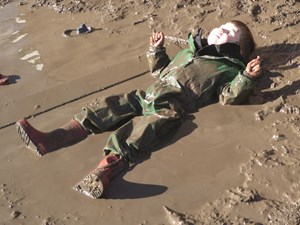 WHAT DO WE NEED TO BE WORKING ON IN PRACTICE?
WHAT DO WE NEED TO BE WORKING ON IN PRACTICE?
Once again, this Key has several important components, and working on each will yield significant gains in how much and how well the outdoors is used. Finding ways to make access to the outside as direct as possible, and making movement between indoor and outdoor areas easy for all children to manage autonomously most of the time, including those with mobility difficulties, is critical. This is supported by locating the clothes-changing area adjacent to the indoor/outdoor access, rather than elsewhere in the building.
When free-flow movement between the inside and outside is available, children can easily move between the indoor and outdoor parts of the learning environment and choose where to be at any time during the day. A covered area next to the indoor/outdoor access gives children a pausing place for adjustment and offers a space to store, organise and manage outdoor clothing well. With attention, this ‘transitional space’ can become a different and special type of place – half in and half out – that should also work at supporting linkage between indoors and outdoors.
Every child must have the clothing and protection they need for the prevailing weather conditions. It is important that all children are physically and emotionally comfortable and safe whenever they are outside, so that they both enjoy being there and fully engage in the learning opportunities available. Children need to be able to sit, kneel or lie on the ground and to become involved in active, full-bodied and messy activities – dungarees can be ideal for this for much of the year.
Children must also be able to easily find, self-manage and return their outdoor clothing. The aim is to provide a well-organised changing area with ample sitting or floor space for children to change footwear and clothing. If staff acknowledge and value this process as part of children’s learning (think of all the embedded mathematical possibilities, for example), they will give them time and support to become proficient in selecting clothing and getting changed. Similar attention must be paid to ensuring that all adults also have appropriate clothing.
HOW TO MAKE A START AT DEVELOPING PROVISION AND PRACTICE
- Do your indoor and outdoors spaces work well together, and how easy is it for children to move between inside and out?
- Does every child have the right clothing for making the most of the outdoors, and what helps them to keep their belongings organised?
- Is the changing area in the right place and is there actually enough space for everyone?
THINGS TO EXPLORE AND READ
- Outdoor Learning in the Early Years: Management and innovationby Helen Bilton.
- Risk-taking and resilience: lessons from Japanese kindergartens. 1. Routines by Julie Mountain and Mary Jackson. Free download: https://bit.ly/3M9iI4z.
- ‘There’s no such thing as bad weather…’ by Liz Edwards in The Outdoor Practitioner: https://bit.ly/3C1eNSL.
- Clothing & Footwear, Muddy Faces shop: https://bit.ly/359Oe1S.
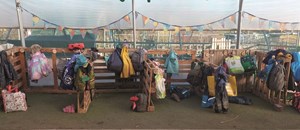 THINGS TO DO
THINGS TO DO
- Take a good look at your children’s outdoor clothing. Review how suitable it is across the year and how well it enables (or prevents) children to make the most of being outdoors.
- Create and organise a changing area that works well. Involve the children in decisions and actions at all stages. Is it in the right place, is there enough room, does it help children to manage the changing process, is it easy to keep from becoming chaotic?
- Spend some time watching how children behave at the threshold between inside and outside and how they transition between the two. What helps or hinders them in going outside and deciding where to go first? What signals to them to slow down and change to a less boisterous and noisy way of being on coming indoors?
Nursery World Awards 2022: Enabling Environments– go to nurseryworldawards.com/2022-categories to find out more and enter
CASE STUDY: Growing Wild in Barnsley, South Yorkshire
‘As a fully outdoors setting for two- to five-year-olds, we constantly reflect on how we organise our environments and have recently redesigned and repurposed our large polytunnel,’ says owner and manager Janet Packer.
‘This covered space provides some respite from the elements, but is not an indoor space. Originally it had areas for welcoming families, storing bags and dry clothing, toilet and changing facilities, a warm tent for quiet time and stories and a variety of play opportunities for the children to engage in. But with a rapid increase in numbers over 2020, it became apparent that this space was not serving the multi-purposes we had given it.
‘After much consideration, we decided to develop the polytunnel into a purely functional space that would service the outdoors, taking all the play outside. This has allowed more inviting space for sleeping and stories, a much more manageable clothing area – with an individual peg for each child attending – and far more room for children to manage changing for themselves. We now have an effective space which functions well in supporting the children’s needs throughout the day. It serves as a transitional space between parents and nursery, busy and calm or sleep, and between cold, wet and muddy and dry and warm. This in turn has led to better organisation and functionality, as well as happier children and practitioners!’
- Read more: https://bit.ly/35ApG1w
Professor Jan White is author of several books on outdoor provision and practice and co-director of the specialist training company Outdoors Thinking
Download Now

